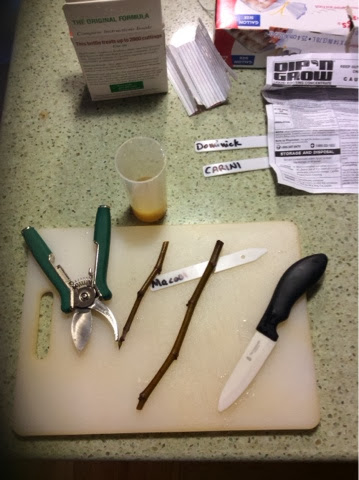 |
| Image source - vintageprintable.com |
After having the soil tested, and reading the recommendations, I looked up what a number of my garden plants require. According to the info I could find, many would tolerate soil pH in the range of my soil, pH 5.05. Which must make sense, because they grew in it last year. However, if I lime the soil, maybe some or most will be more vigorous, or more productive, or produce earlier.
From this site -
the gardenhelper.com I edited out vegetables I don't grow and don't plan to grow.
|
|
| Vegetable |
Optimal pH |
| Okra |
6.0-8.0 |
| Onions |
6.2-6.8 |
| Parsley |
6.0-8.0 |
| Peasmage |
5.6-6.6 |
| Peppers |
6.0-8.0 |
| Potato |
5.8-6.5 |
| Pumpkins |
5.0-7.0 |
| Radish |
6.0-7.0 |
| Raspberry |
6.0-6.5 |
| Rhubarb |
5.0-7.0 |
| Rutabaga |
5.0-7.0 |
| Shallots |
5.0-7.0 |
| Spinach |
5.0-7.0 |
| Squash |
6.0-7.0 |
| Strawberries |
6.0-7.0 |
| Sunflowers |
6.0-7.0 |
| Sweet corn |
6.0-7.0 |
| Swiss chard |
6.0-7.0 |
| Tomatoes |
5.5-7.0 |
| Turnip |
5.0-7.0 |
| Zucchini |
6.0-7.0 |
|
From various websites,
 |
| Image source vintageprintable.com |
Apple - 5.0 to 6.8
Bearded Iris - slightly acidic to almost neutral, about 6.8
Buddleia 5.5 to 6.5, another site states 6.0 to 7.5. They grew like crazy in my ph 5.05 soil.
Cherry - 5.5 to 8.0 prefer 6.5; another site state 6.2 to 6.8
Chinese Haw - 4.3 to 7.3
Dogwood 5.0 to 7.0
European Ash 5.0 to 8.0
Figs - 6.0 to 6.5
Ginkgo - 5.0 to 8.0
Golden Chain Tree - 5.0 to 8.0
Iris - 6.5 to 7.0
Linden - 7.0 to 8.0 but another site states 4.5 to 7.5 and prefers 7.0; another site states 5.0 to 8.0
Lilac 6.0 to 7.5 but there is a massive lilac in our soil pH 5.05
Mulberry - 5.5 to 7, another site states 5.5 to 6.5
Okra - 6 - 8
Paw Paw - 5.5 to 7.0 but another reference states 5 to 6
Peach - around 6.5
Pear - 6.0 to 6.5 but tolerate 5.0 to 7.5
Persimmon - 6.5 to 7.5
Plum - 5.0 to 6.5
Quince - 6.0 to 7.0
Red Twig Dogwood - 5.0 to 8.0
Tomato - 6.0 to 7.0 better if 6.5 to 6.8
Weigela 6.0 to 7.0
Acidic, 4.5 to 6.0:
Pieris, Rhododendron, Azalea, Camellia.
Not related to this topic, but thought about after looking for images to ponder for this post. The vintageprintable image at the top does not give a source, but the caption states those are 3 year old black locust trees, form seed, in Kentucky. About 1910. That's a lot of growth in 3 years. It makes me wonder - is it because they are from seeds? Because they are a fast growing black locust? Because the climate and soil in that Kentucky forest was super good in the 1900s? All? I think more people should try to grow trees from seeds. We would have more diversity, the trees would be free, and if some achieve that size, that fast, then there would be faster biomass accumulation and faster shade.

















